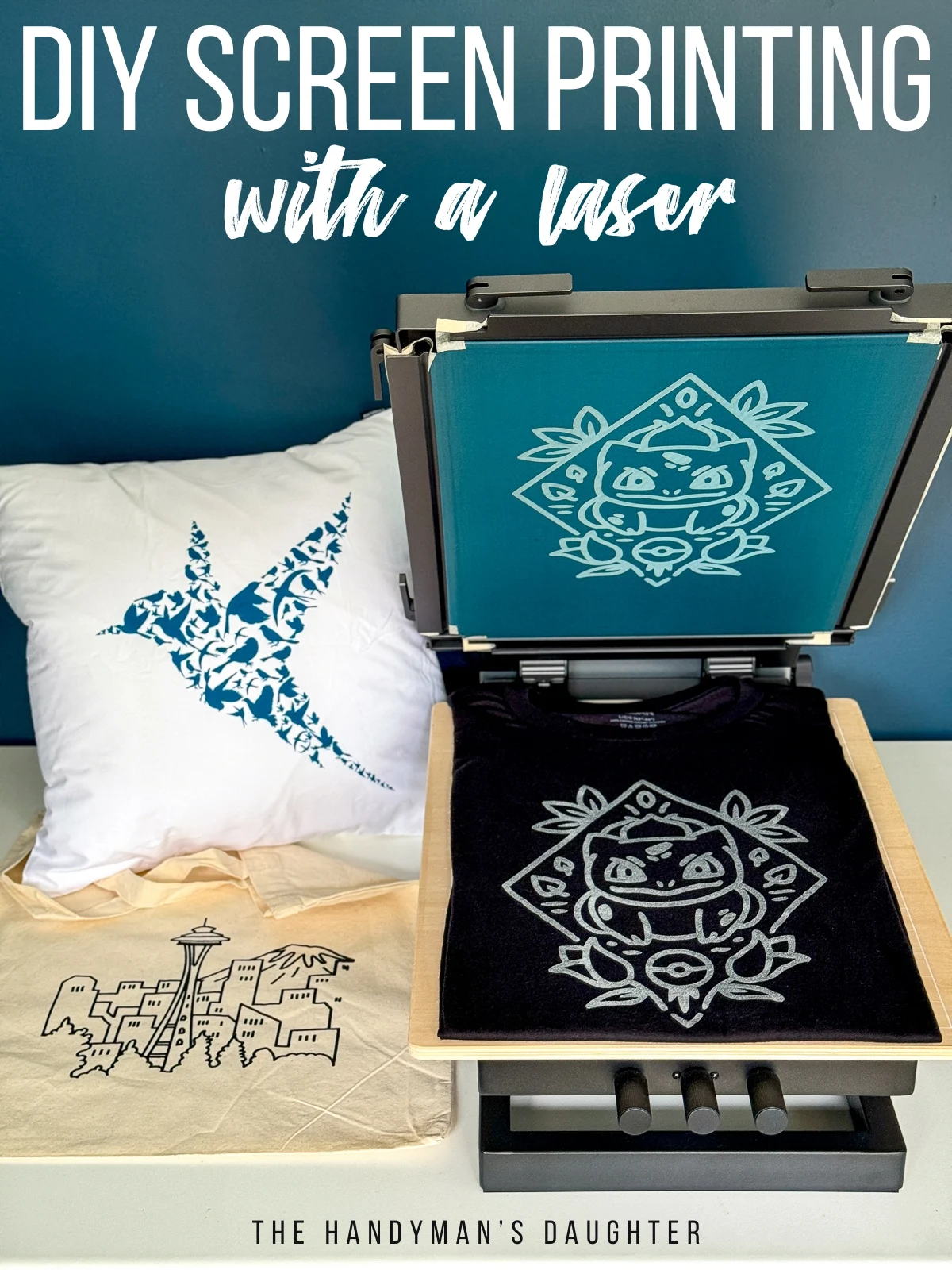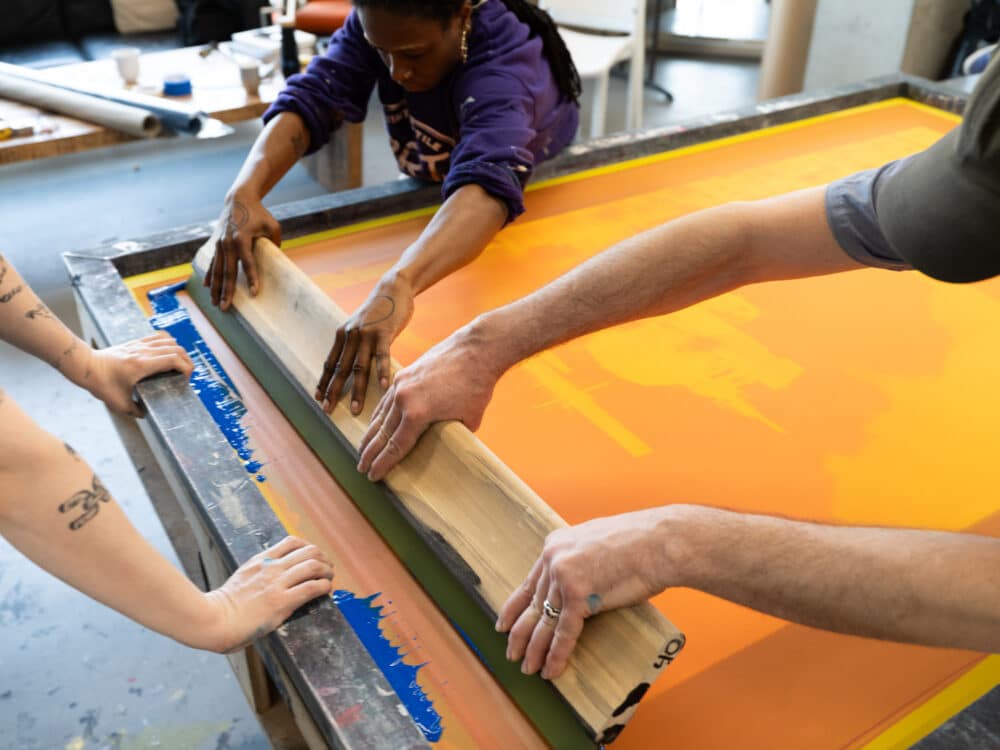Screen Printing troubleshooting: how to fix common printing problems
From Design to Delivery: Grasping the Art of T-Shirt Screen Printing
The journey from style to distribution in t-shirt screen printing incorporates a collection of critical points that demand focus to information and calculated planning. It starts with recognizing the nuances of your target market, complied with by the choice of proper materials and the preparation of art work that satisfies high criteria. Yet, as the procedure unravels, difficulties in top quality control and logistics can arise, potentially affecting the final end result. Exploring these complexities exposes not just the intricacies of screen printing however additionally the necessary methods that can elevate a brand name's standing in a competitive market.
Understanding T-Shirt Screen Printing
Recognizing T-Shirt screen printing includes acknowledging a versatile and commonly utilized technique for moving designs onto textile. This technique makes use of a stencil and a mesh screen to apply ink onto numerous textile materials, mainly cotton and polyester blends. The procedure starts with the development of a display that includes the desired design, which is after that carefully straightened on the textile.
Ink is pressed with the screen's open areas utilizing a squeegee, enabling exact application of shade. This approach is favored for its capacity to create dynamic, durable prints that stand up well to washing and use. Furthermore, screen printing is qualified of fitting both complex and simple designs, making it a recommended option for custom garments, marketing items, and even artistic jobs.
Screen printing offers scalability, making it suitable for both small batch orders and large productions. While first arrangement costs may be greater compared to other printing methods, the effectiveness and longevity of screen printing commonly validate the financial investment. Generally, understanding the basics of Tees screen printing is important for anyone wanting to take part in this preferred kind of material design, whether for personal jobs or commercial endeavors.
Conceiving Your Layout
Conceptualizing your style is an essential step in the Tees screen printing procedure, as it establishes the structure for the entire project. This stage includes generating concepts that resonate with your target market while making sure that the style lines up with the brand's identity and message. It is necessary to begin by exploring styles, color pattern, and graphics that mirror the desired visual.
Laying out preliminary principles can be advantageous, allowing for a graph of ideas before completing the design (Screen Printing). Think about making use of typography, images, and format in a method that records attention and interacts successfully. Additionally, it is vital to expect the printing technique that will certainly be used, as this can influence style intricacy and color options
Participating in brainstorming sessions with team participants or looking for feedback from potential customers can likewise enhance the concept procedure, supplying diverse point of views that improve the design. Eventually, a well-thought-out layout not only enhances the aesthetic allure of the T-shirt yet additionally promotes a connection with the audience, driving rate of interest and potential sales. Committing time to conceive your design can lead to a successful screen printing result.
Selecting the Right Products
When selecting the right materials for Tee shirts screen printing, it is necessary to take into consideration the textile's make-up, weight, and structure, as these elements considerably impact the end product's quality and feel. Cotton is a preferred choice because of its breathability, capability, and softness to soak up ink effectively, making it ideal for dynamic prints - T-Shirt Printing. Blends, such as cotton-polyester, offer longevity and crease resistance, however may affect ink adherence, requiring cautious factor to consider of printing techniques
The weight of the textile, normally measured in grams per square meter (GSM), influences the drape and overall feeling of the Tee shirts. Larger fabrics may supply a much more premium appearance, while lighter choices fit for informal wear. Structure likewise contributes; smoother textiles tend to produce sharper prints, while textured surface areas can develop one-of-a-kind aesthetic results.
Furthermore, consider the ecological impact of materials. Organic cotton and recycled polyester are obtaining appeal among eco-conscious customers. Inevitably, selecting the right products entails stabilizing visual allure, functionality, and sustainability, ensuring that the Tee shirts not just looks great but additionally meets the assumptions of your target audience.
Preparing Art Work for Printing

Preparing artwork for T-shirt screen printing requires careful attention to information to ensure that the last print accurately reflects the designated style. The first action is to produce a high-resolution electronic data, preferably in vector layout, as this allows for scalability without loss of high quality. Typical software program made use of for this purpose includes Adobe Illustrator and CorelDRAW.

Think about the measurements of the print location and preserve proper margins to stay clear of layout cutoff. It's likewise sensible to include enrollment marks for alignment throughout the printing process. Request an evidence from the printer to envision the last product before mass production. This step is crucial for determining any kind of possible problems, assuring that the published T-shirt meets the preferred top quality and design specs. Appropriate preparation of art work substantially influences the overall success of the screen printing project.
Mastering the Printing Process

Next, selecting the ideal ink is essential. Different ink types, such as plastisol or water-based, deal numerous finishes and toughness. Recognizing the fabric make-up of the Tee shirts also helps in picking compatible inks.
When Find Out More it pertains to the actual printing, controlling the squeegee pressure and angle is essential. Regular stress will certainly yield also ink circulation, while the angle affects the flow and coverage. In addition, adjusting the speed of the printing machine can influence the ink's curing process, which is essential for guaranteeing durability.
Top Quality Control and Finishing
After the printing procedure is total, carrying out reliable quality assurance procedures ends up being important to verify that each Tees satisfies the preferred requirements. Quality assurance includes an organized technique to evaluating each garment for issues, confirming that the print quality, shade precision, and fabric stability line up with the specifications set during the style phase.
The very first step in top quality control is a thorough aesthetic examination. This requires monitoring for common problems such as misalignment, ink spots, or fading. Any type of T-shirt that does not fulfill the top quality criteria should be addressed immediately, either with reprinting or repair service.
Along with aesthetic checks, it is essential to conduct wash examinations on an example of printed tee shirts to analyze the resilience of the inks and the general longevity of the style. These examinations assist verify that the print will keep its vibrancy and stability after numerous laundries, a necessary variable for client contentment.
Completing touches, such as thread cutting and the application of care tags, likewise play a significant role in quality control. By concentrating on these elements, businesses can enhance the overall discussion of their products, eventually leading to a much more rewarding customer experience.
Packaging and Shipment Solutions
Reliable packaging and distribution remedies are essential parts of the T-shirt screen printing procedure, as they assure that garments get to their destination in excellent problem. Proper packaging not just secures the published designs however additionally enhances the unboxing experience for customers, reinforcing brand name identity and professionalism and reliability.
To attain optimal product packaging, consider using environmentally friendly products that line up with sustainability patterns, such as recyclable poly bags or biodegradable boxes. Each Tees ought to be neatly folded up and positioned in safety wrapping to avoid creasing and prospective damage during transportation. Consisting of a well-known insert or treatment guidelines can further personalize the experience, fostering customer commitment.
When it comes to distribution, picking a dependable delivery companion is necessary. Assess choices based upon price, tracking, and speed abilities. Using several delivery methods can deal with various client needs, from typical to expedited delivery.
Frequently Asked Concerns
What Are the Typical Mistakes Beginners Make in Screen Printing?
Usual errors newbies make in screen printing include inappropriate screen preparation, inadequate ink blending, wrong exposure times, inadequate treating, and neglecting to test prints. These errors can bring about inadequate top quality and poor results in last products.
Just How Can I Avoid Ink From Bleeding Throughout Printing?
To stop ink bleeding throughout printing, guarantee correct screen tension, use appropriate solution thickness, select the right ink consistency, keep ideal curing temperatures, and avoid straining the screen with excessive ink during application.
What Kinds of Inks Are Best for Different Fabrics?
Selecting inks based on material type is necessary. Water-based inks are ideal for cotton, providing softness. Plastisol inks fit synthetic materials, supplying durability (Abilene T-Shirt Printing Solutions). Release inks successfully mix with natural fibers, guaranteeing lively colors without endangering fabric integrity
How Do I Choose the Right Screen Mesh Count?
Choosing the ideal screen mesh count depends upon the wanted print detail and ink type. Greater mesh matters produce finer information, while reduced counts assist in thicker inks. Assess textile type and style intricacy for ideal results.
Can I Use Screen Printing for Little Set Orders?
Yes, screen printing can be efficiently utilized for little batch orders. Abilene T-Shirt Printing Solutions. This approach permits high-quality outcomes and in-depth designs, making it a practical choice for personalized apparel, marketing items, or limited edition runs
Recognizing T-Shirt screen printing entails identifying a functional and extensively used technique for transferring designs onto fabric. While preliminary arrangement prices may be higher contrasted to various other printing techniques, the performance and longevity of screen printing typically warrant the financial investment. Preparing artwork for T-shirt screen printing requires mindful focus to detail to ensure that the final print accurately shows the designated layout. Mastering the printing process is essential for accomplishing premium outcomes in T-shirt screen printing. Usual mistakes novices make in screen printing include improper screen preparation, inadequate ink blending, inaccurate exposure times, insufficient treating, and neglecting to test prints.